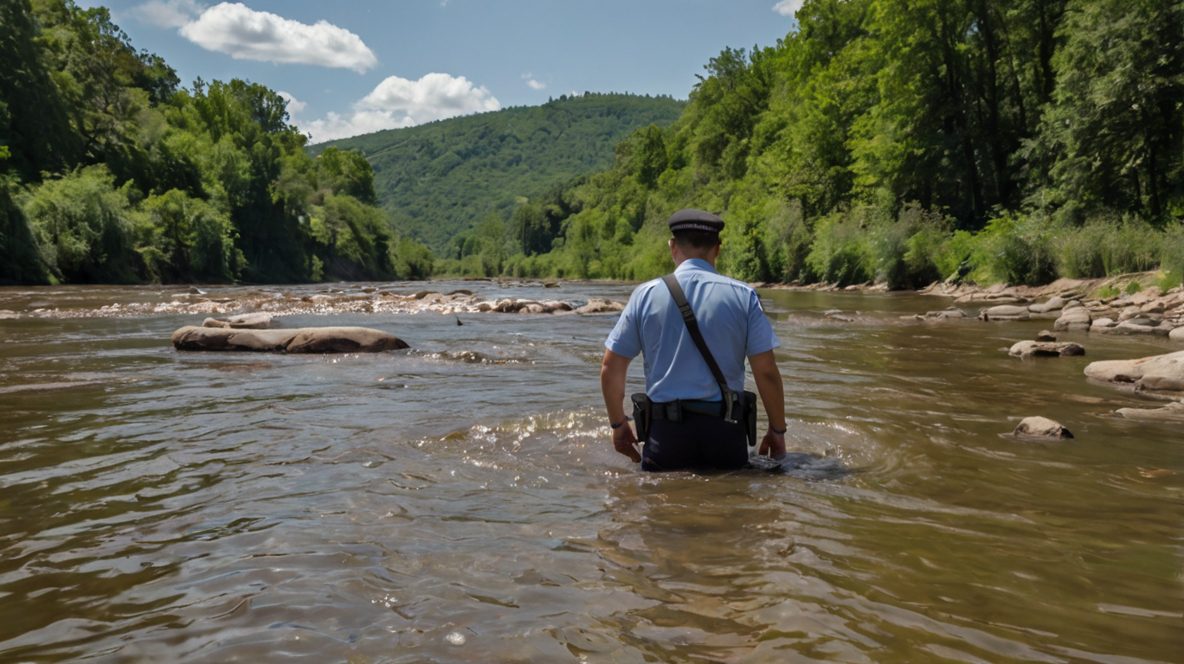Rescue Efforts Continue After Swimmer Goes Missing at Beaver Dam in Baltimore County
Search teams are still looking for the swimmer who vanished Sunday evening at Beaver Dam in Baltimore County, according to local officials.
Police say they got the call around 6 p.m. to the 10,000 block of Beaver Dam Road in Cockeysville. A bystander reported that a man in his 30s went underwater and did not come back up. Witnesses told officers they saw him having trouble before he disappeared.
Rescue crews from the Baltimore County Fire Department hit the water right away with dive teams. However, efforts paused as darkness fell to keep everyone safe. Search operations will start again Monday morning with specialized divers and sonar gear.
Swimming Safety Concerns
While crews keep looking, officials are reminding everyone to be extra careful around the water. Late summer usually brings larger crowds to pools, lakes, and beaches.
The American Red Cross treats drowning as one of the top preventable accidents. To keep everyone safe, experts recommend:
- Never swim alone – Always have a buddy in the water with you, even if the spot looks safe.
Stay Safe Around Water
- Swim only where lifeguards are on duty. If there’s no lifeguard on duty, it’s best to stay on dry land.
- Stick to your skill level. Don’t push your limits or ignore how tired you are.
- Always wear a life jacket. They’re a game changer for anyone who isn’t a strong swimmer.
- Shape your swim to the water. Lakes, rivers, and oceans have hazards pools don’t, so treat each place with respect.
- Swimming lessons matter. Classes cut the risk of drowning, especially for kids, more than you might think.
Rough Surf Warning on the East Coast
Hurricane Erin might be gone, but it’s still sending strong waves and rip currents to East Coast beaches, including spots in Maryland.
Ocean City lifeguards have already posted safety warnings, and Captain Butch Arbin says that when the surf is rough, lifeguards mark how far out you can swim. Stay between the flags and listen to the whistle.
“When conditions aren’t ideal, we set swimming zones,” said Arbin. “We might define a line at knee-deep or waist-deep water. Setting those limits gives us a better chance to reach someone before a current can pull them away, compared to when they’re already in chest-deep water and it takes longer to swim to them.”
Maryland beach officials repeat a simple rule: always heed the posted flags, and never get in the water when the lifeguards aren’t on duty.
Getting to Know Rip Currents
The National Oceanic and Atmospheric Administration (NOAA) defines rip currents as fast channels of water that move away from the beach, usually harder to see than most people think. Typical signs include a stretch of ocean that looks like it isn’t breaking, or one that seems foamy or a different color and flows seaward.
A few key rip current pointers:
- Wind and waves of 2 to 3 feet or more can generate them.
- They’re most likely during low tide.
- They often appear close to piers, jetties, and sandbars.
- Because they can change quickly, NOAA reminds swimmers to stay at least 100 feet clear of piers and jetties.
What To Do If You’re Caught in a Rip Current
Getting pulled into a rip current can be scary, but staying calm is the best first step. Experts say don’t fight the current; it’s stronger than most people and trying to swim straight back to shore will make you tired fast.
Instead, here’s a simple plan to follow:
- Stay calm. The current is designed to pull you out, not push you under the water.
- Signal for help. Wave your arms and yell for a lifeguard or for someone close by. They can help you.
- Swim parallel to shore. Move sideways to the current. Once you’re out of the narrow, fast water, you can swim back to land.
- Float if you’re tired. If you can’t swim anymore, lie back and let the current carry you. It will get weaker soon. When it does, swim back at a slight angle.
To make it easy to remember, Captain Arbin uses the simple acronym RIP:
- R stands for Relax. Don’t let panic take over.
- I is for Indicate. Wave and shout for help.
- P means Parallel. Swim sideways until you’re free.
A Reminder as Summer Winds Down
The tragedy at Beaver Dam shows that even the most familiar lakes and pools can be more dangerous than they look. As divers keep searching the waters near Cockeysville, local officials are asking everyone to stay alert, stick to safety rules, and pay attention to every “swim at your own risk” and “no diving” sign.
Hurricane season is here, and waves, currents, and temperatures can change quickly. Safety experts remind us that the best way to stay safe is to keep watch, make smart plans, and never let our guard down.
For more local and global safety updates, visit 24 Hour Bulletin.



